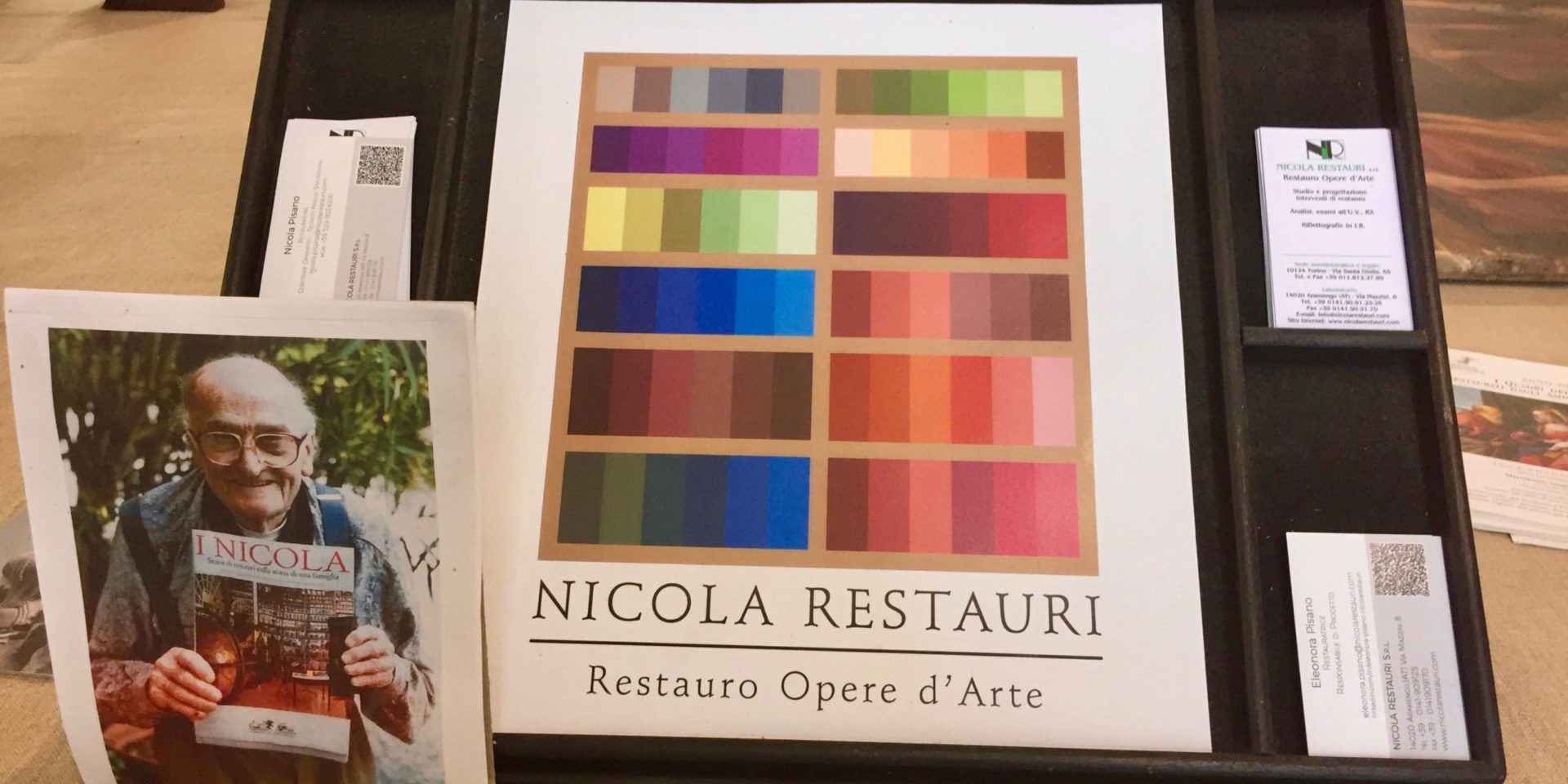ONE-MA3 – Day XXII: Walking Through Amazonian, Medieval, and Egyptian Histories and Culture
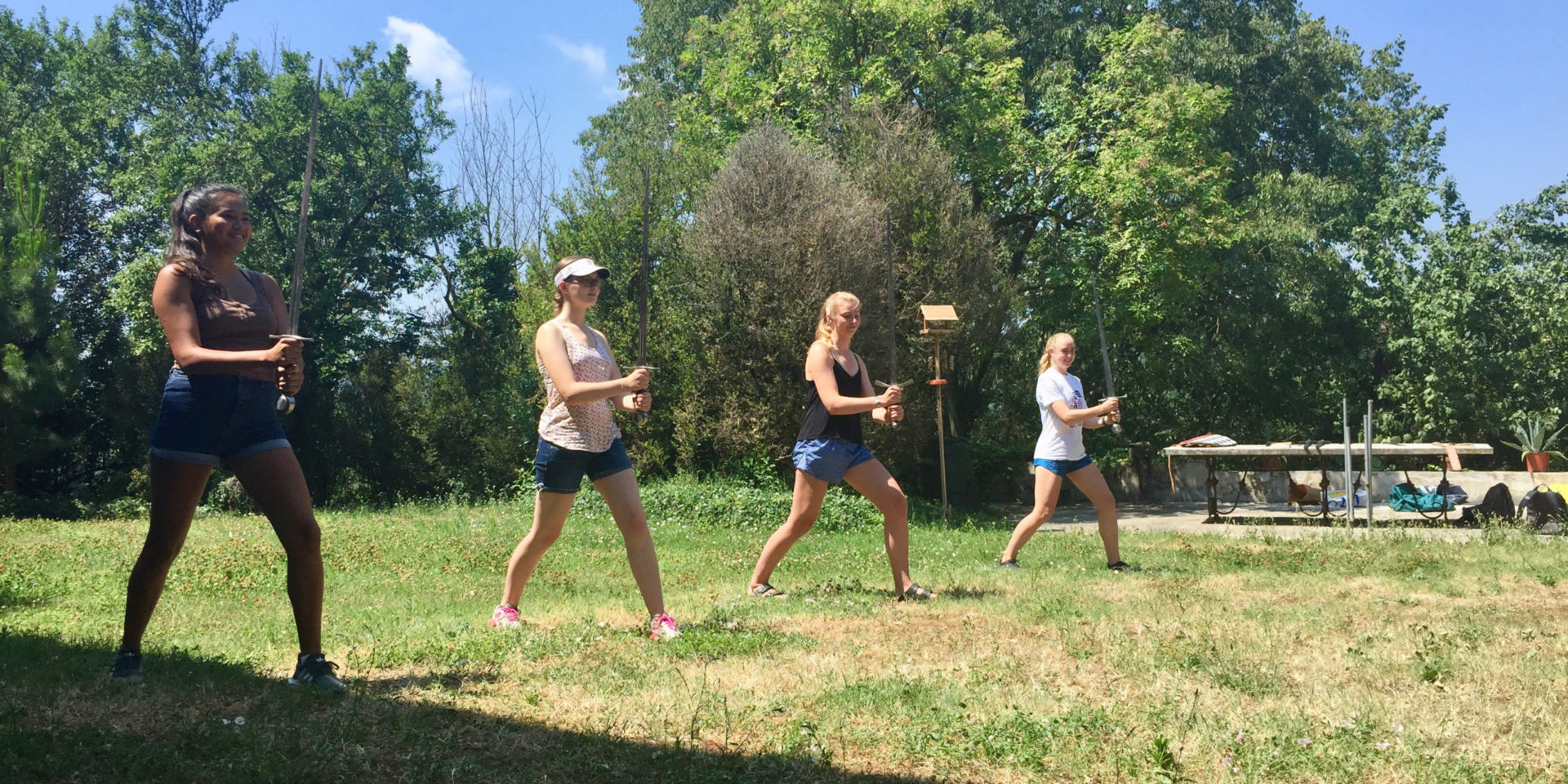
By Sophia Mittman ’22
“When you first start, and then you fail, that’s when it gets interesting, and you realize what you need to do next.” The wise words of Professor Masic resonated in our ears as we opened the kiln in the Nicola Restoration labs in Aramengo a day after we had synthesized our first attempts at Egyptian blue. Some groups had put their black, rust-colored, or grey powders into the kiln the previous evening. Now, after a night of firing, most of the pigments came out as a combination of blues, turquoises, and teal colors…a success! As for my group, our powder went into the kiln as a bright turquoise color, which gave us a false sense of confidence as we waited overnight. When our crucible came out of the furnace, what used to be that bright-turquoise color had melted down into a glob of some strange greyish silver material…definitely not Egyptian blue. After a test of Visible Induced Luminescence (VIL) in a dark room void of sunlight, we discovered for sure that the blue pigments emitted varying amounts of fluorescence, while my group’s pigment gave off barely any fluorescence. Afterward, we contemplated our synthesis procedure and hypothesized that perhaps we had included too much flux (sodium carbonate) or simply hadn’t added enough copper, which could make the final product bluer. Either way, if we go back to try our synthesis again back at MIT, we will know what to adjust in our experiment!
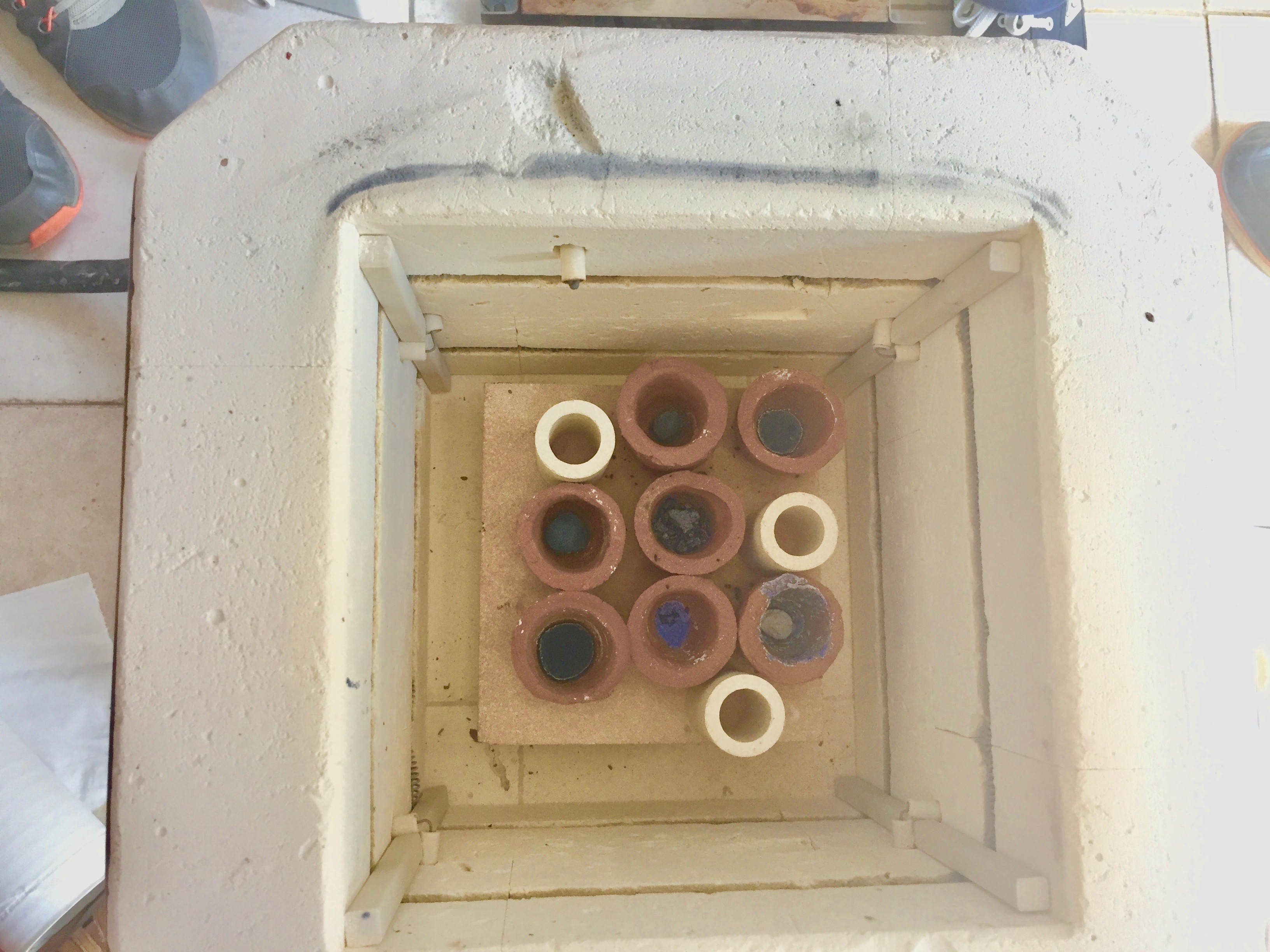
Our Egyptian blue pigments after one night of firing in the furnace
Midday, we explored other materials of cultural heritage from around the world through a few lectures taught by guest professors and graduate students. For instance, we learned about a sustainable, ancient type of Amazonian soil from MIT Professor Dorothy Hosler. Ideally, agriculture within areas of the Amazon rainforest shouldn’t thrive very well. But, interestingly, this specific type of soil which is known as “terra preta de índio” (Indian black earth) is carbon-rich and gives rise to a sustainable and efficient manner to raise crops. Still, researchers are not certain how or why this soil contains carbon in this way, which provides us with the opportunity to pursue this as a research project in the near future at MIT! We were also enlightened a little bit by the least-massive mass in the world: aerogels, which are now being used in the restoration of paintings and old buildings (fun fact: there is a display of a mass of aerogel at the MIT museum!). Entering into an area of cultural heritage combined with some fantasy, we got to explore another area of material science that we had not yet been exposed to: metals! At least, we were trained to handle the actual products of medieval metalsmithing in short sword-fighting drill sessions. We quickly caught on that medieval swords are not simply a scientific feat of ancient artistry when it comes to metals, but also that medieval sword fighting is an art-form itself!
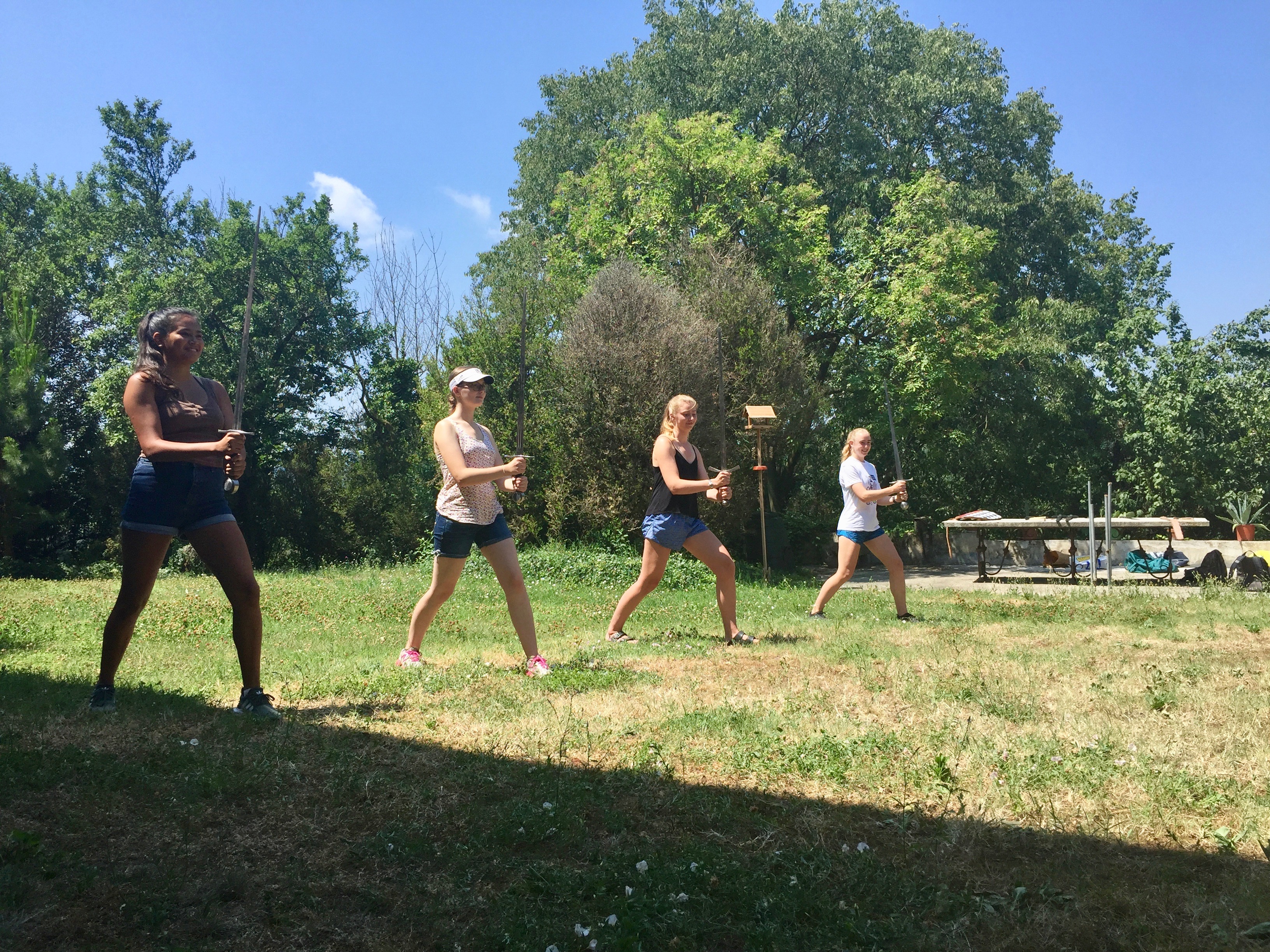
Practicing our medieval sword fighting skills!
Finally, we stepped back even further in time to exercise our skills in reading Egyptian hieroglyphics. The master who had taught us sword fighting guided us in this lesson, too. Growing up, I always assumed that hieroglyphics represented exactly what each picture depicted. For me, my interpretation would have gone something like this: a bird standing next to three trees and a bowl then flies over a river and then runs into a snake. After this professional lesson, though, I realized that I was obviously mistaken. Actually, different combinations and repetitions of figures depict different sounds, words, or ideas. What I found most interesting about Egyptian hieroglyphics was that there are no vowels in the written language. The consonant sounds are there, but the vowels must be filled in, which gives many Egyptian words and names like “Tutankhamun” or “Hatshepsut” that particular and easily identifiable Egyptian sound. Afterward, we participated in a hands-on exploration of how the Egyptians created their hieroglyphs, starting with a layer of mud and hemp that they would have applied to the surface of sarcophagi. For us, we used small wooden frames already filled with a mixture of mud and hemp. Then, like the Egyptians, we smoothed a layer of gypsum (basically plaster) over the mud and after letting it dry, used feathers and other brushes to paint natural pigments over the surface in patterns of hieroglyphics and iconic images of Egyptian gods. Overall, it was a day full of scientific experimentation and exploration, walking through a live version of a history book, and getting to recreate activities that humans did thousands of years ago around the world in different ancient civilizations.
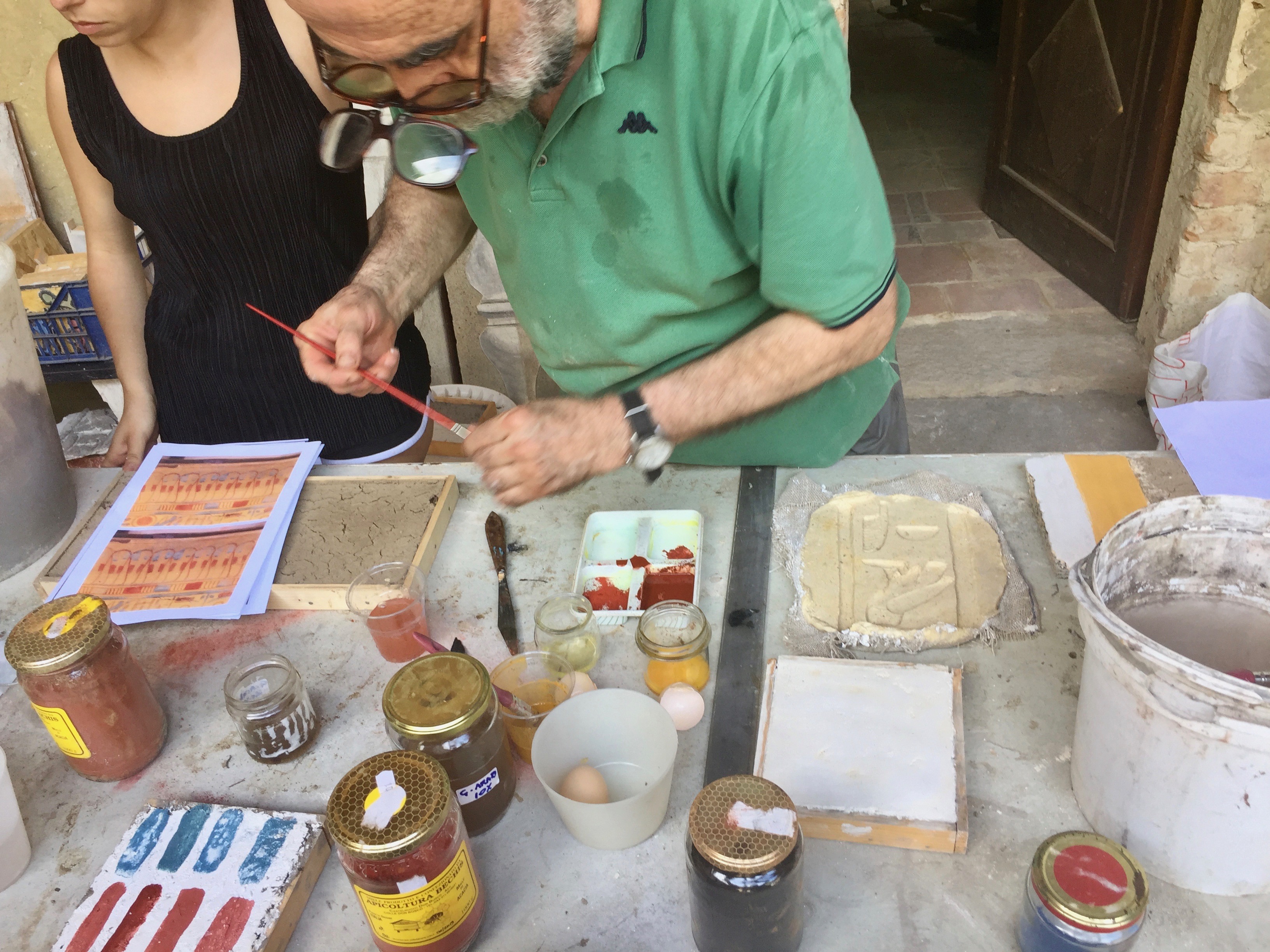
Learning how to create hieroglyphics the Egyptian way with natural pigments on top of gypsum


